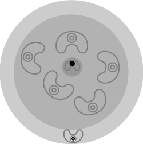October 31, 2005
Architecture of Interaction

Standard Vocabulary, Generic Models >> Toolkit
Architecture of Interaction [AoI] is a project initiated by a group of artists and theorists who are collectively aiming to create a toolkit which can be used to describe the processes and effects of interactive work. This toolkit will consist of a standard vocabulary which can be used by individuals from different artistic backgrounds, as well as a set of generic models that describe six different critical dimensions of interactive working methods. The editors of this site want to connect vocabularies and ideas about art and interaction from various disciplines, namely theatre, visual arts, performance and new media.
Why?: The initiators--Klaas Kuitenbrouwer, Yvonne Dröge-Wendel, Lino Hellings, Anna Best, Mina Kaylan, Nikolaus Gansterer--have several reasons to do this. The interest in interactive artistic work methods continues to grow among makers, curators and commissioners. Yet, each discipline (and often each individual artist) has an independent language for describing interactive works. These languages don't mingle well at all. There is therefore currently too little scope for communication between artists from different disciplines. This often means that the nuanced and vital elements of interactive art works are overlooked.
So?: The main goal of making this toolkit is to make interactive work methods more transparent for makers, commissioners, curators, critics and more general audiences. In doing so, we hope to contribute to both artistic development of interactive works, and to a more sophisticated criticism in the practice and discourse of interactive works.
What works do we (the editors...) call interactive? We see interactive work methods as a kind of meta-discipline, as a disclipline that informs other disciplines. Interactive work methods can be applied to any artistic discipline. Yet, at the same time, these methods have qualities and notions which are entirely their own. From the standpoint of the maker, an interactive work begins when a maker designs the form of the work, the context of the work, AND possible experiences or perceptions for the others that come in contact with his work. In other words, we begin to speak about interactive works when a maker considers the intelligent context as an intrinsic part of the work.
Posted by jo at October 31, 2005 09:00 AM
